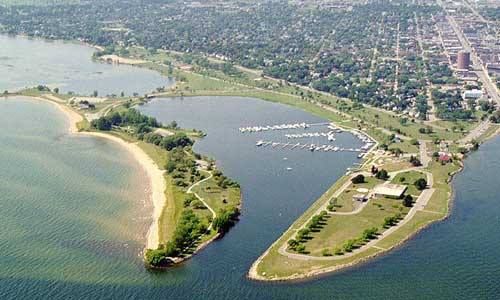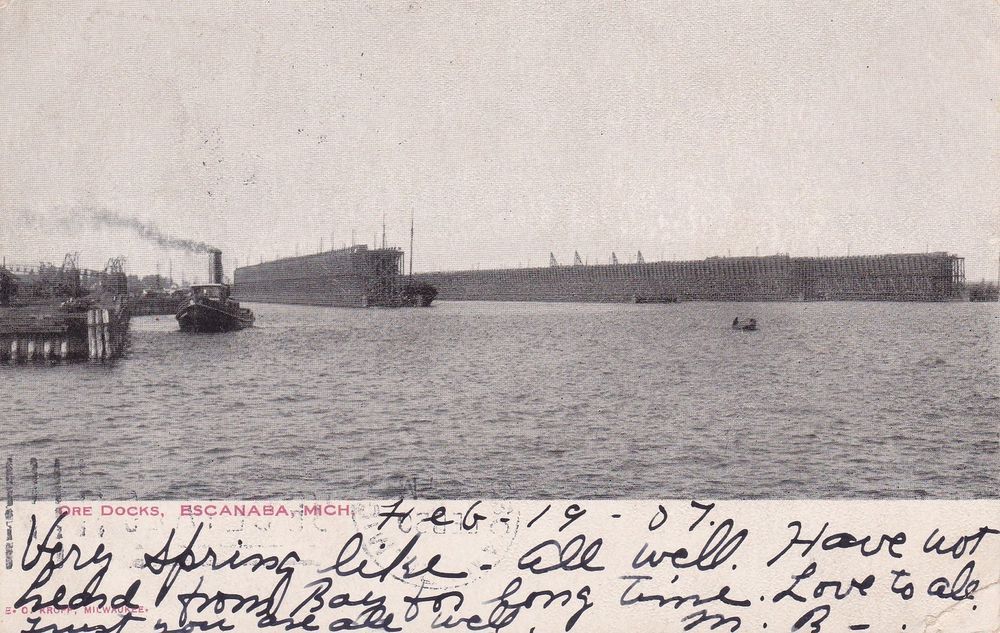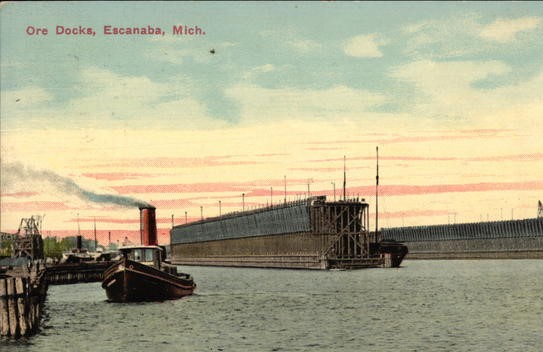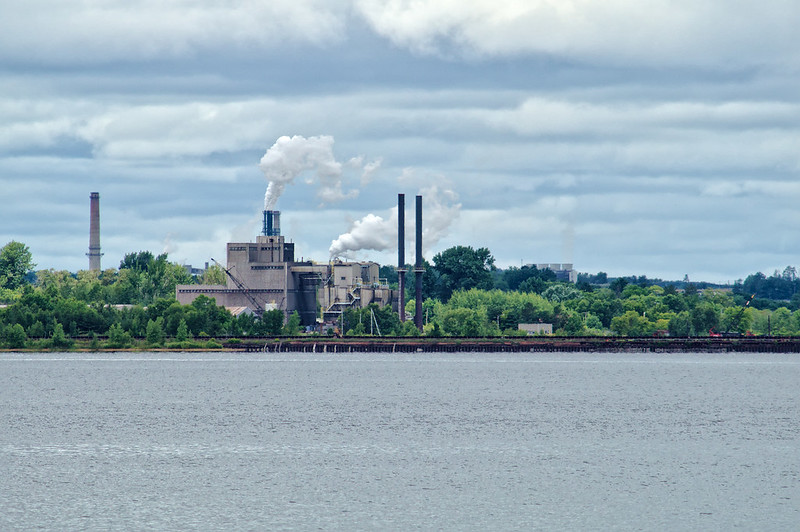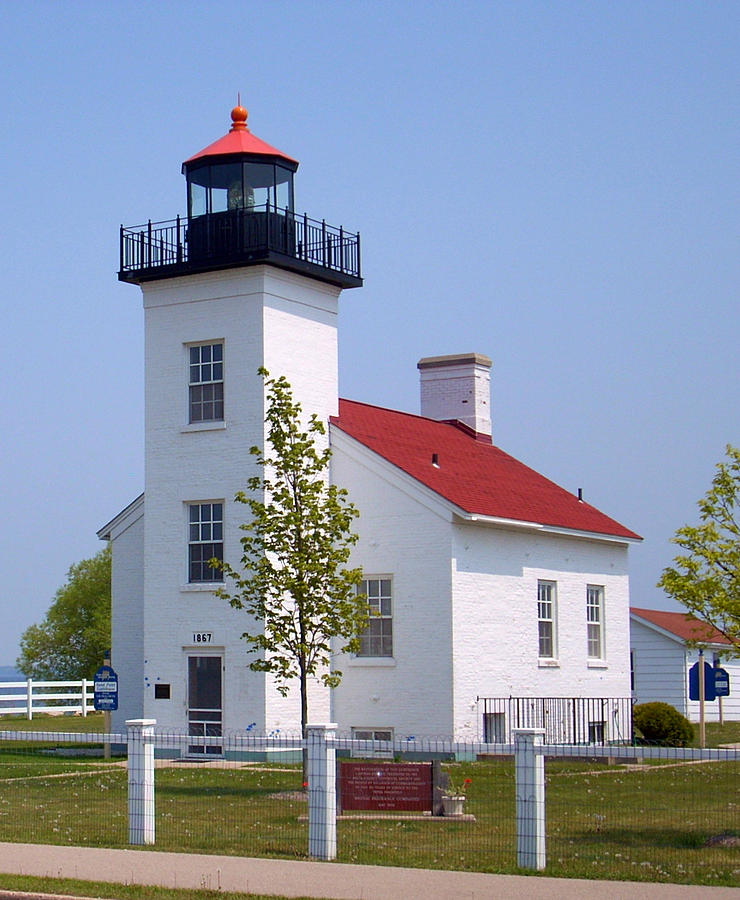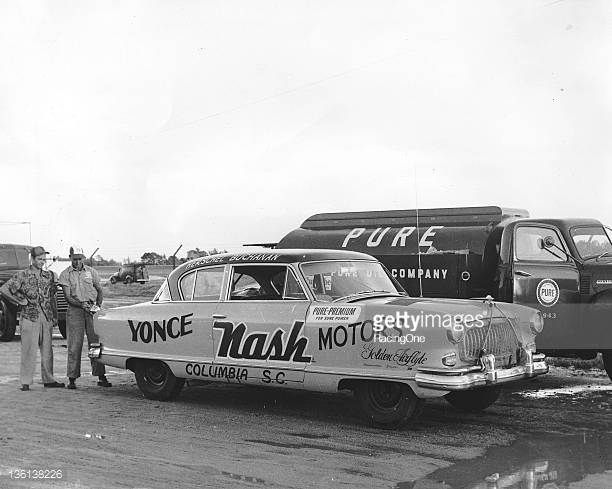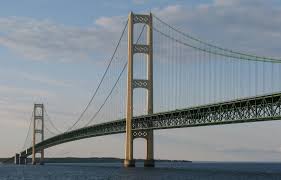ESCANABA, MICHIGAN
- Home Page
- Other Cities
- ESCANABA
Updated October 18, 2020
Escanaba is a waterfront city on the north end of 120 mile long Green Bay, a major arm of Lake Michigan.
It is on the Escanaba River where it flows into Little Bay de Noc, and has a population of 8,599. It is the county seat of Delta County.
HISTORY OF ESCANABA, MICHIGAN
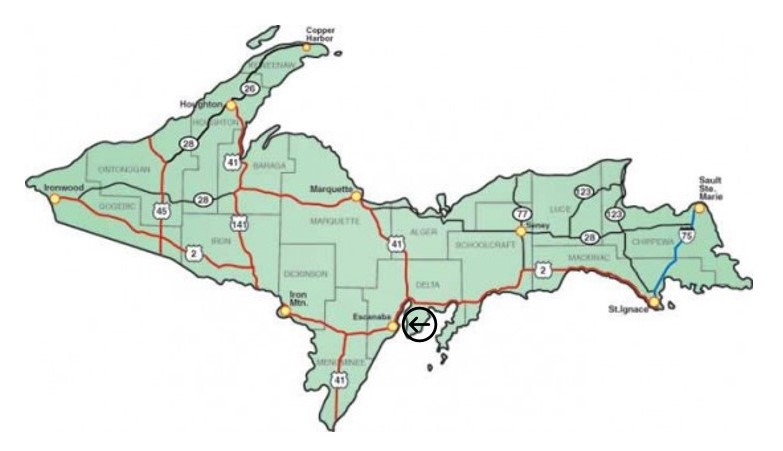
Like most of the places in the Upper Peninsula, Escanaba was an Indian village: in this case, the Ojibwas. The name of the town comes from an Indian word that means either "land of the red rock" or "flat rock."
Whatever its origin and definition, it's pronounced ESKA-NOBBA with the emphasis on the Nobb.
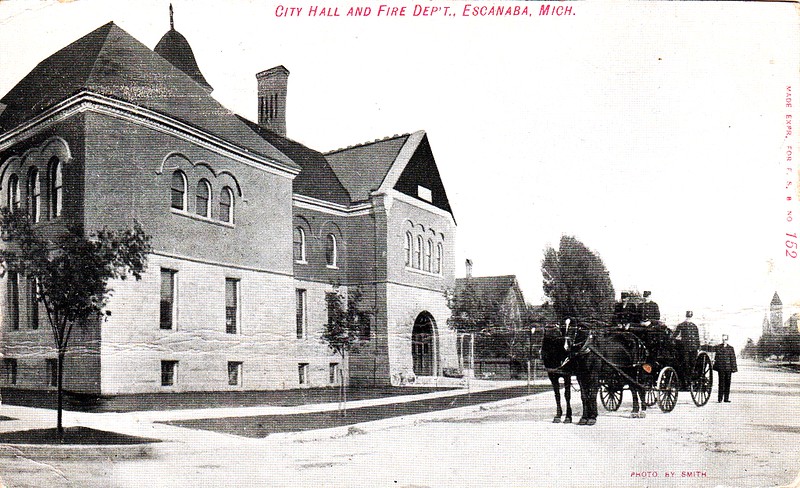 City Hall and Fire Department, Escanaba
City Hall and Fire Department, EscanabaFlickr/Wystan
Modern Escanaba was founded in 1863 as a port town to handle the loading and shipping of natural resources from the Upper Peninsula into Little Bay de Noc and on to other Great Lakes cities.
Lumbering was the first industry in Escanaba. There were many logging camps in the area, and lumber was milled and loaded onto ships.
One of the earliest big time businessmen and city fathers was Nelson Ludington. His name is memorialized in a large historic hotel in Escanaba, the House of Ludington, and in a lower Michigan city.
In addition to lumber, iron ore from the mines on the Marquette Range was being shipped out of Escanaba. When the Civil War began in 1861, the Union recognized how important the port was to getting more iron ore to the iron works and steel mills on the Great Lakes.
Larger ore docks were then built with higher capacity for loading.
After the Civil war, iron ore remained an important product from the mines in the Menominee Range and the Gogebic Range of the Upper Peninsula.
Escanaba was the most important iron ore shipping port on the Lake Michigan shore of the Upper Peninsula.
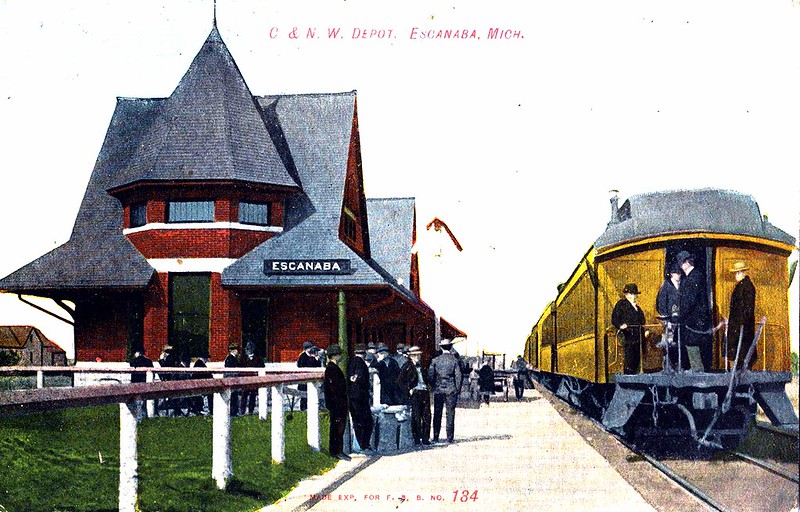 C. & N.W. Depot, Escanaba
C. & N.W. Depot, EscanabaFlickr/Wystan
As the volume of shipping increased from Escanaba, the government constructed the Sand Point Lighthouse to warn of the sand shoals in Little Bay de Noc. The lighthouse was completed in 1868.
The Chicago & North Western Railroad was the major train route that served Escanaba. It was founded in 1859 in Chicago and one of its routes ran north through Green Bay, Wisconsin to the Upper Peninsula through Menominee, Escanaba, and Ishpeming.
Lumber was transported by ship and train to cities all around the Great Lakes, with much of it being used for houses and buildings in the major cities along the lakes.
For many years the railroad also operated a passenger train, the Peninsula 400, from 1942 until 1969. It was the last passenger train to serve the Upper Peninsula.
ESCANABA, MICHIGAN TODAY
The last Escanaba iron ore shipping dock closed in 2017.
The main industry in the city today is the Verso Corporation paper mill that specializes in producing publishing paper.
It is located on the edge of town on the Escanaba River.
It is descended from an earlier paper mill established in 1911, the Escanaba Pulp and Paper Company. The current mill is large by any standards, occupying 2,000 acres.
The mill is Escanaba's largest single employer and an extremely important part of the economy.
The Sand Point Lighthouse is now a popular attraction located on the Escanaba waterfront.
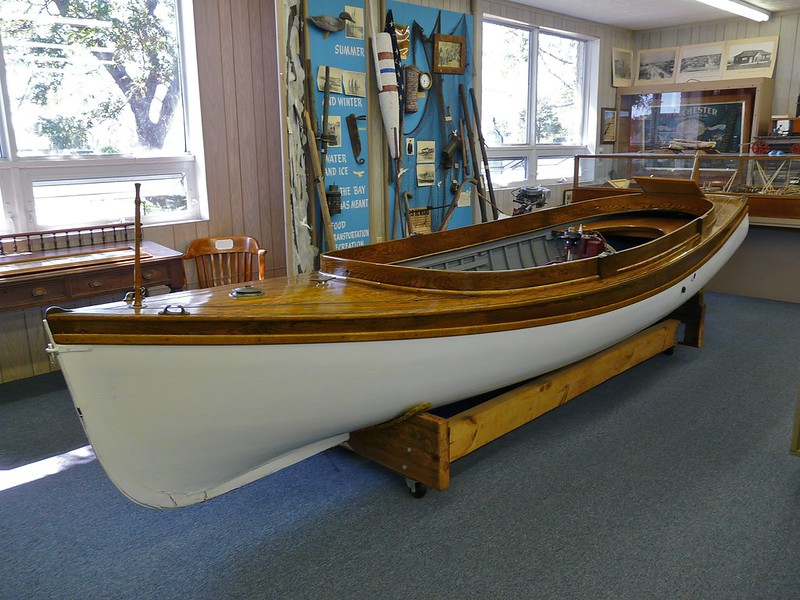 Sand Point Museum & Lighthouse
Sand Point Museum & LighthouseFlickr/Deb Nystrom
It has a museum on the property with numerous marine artifacts and memorabilia from the city's history.
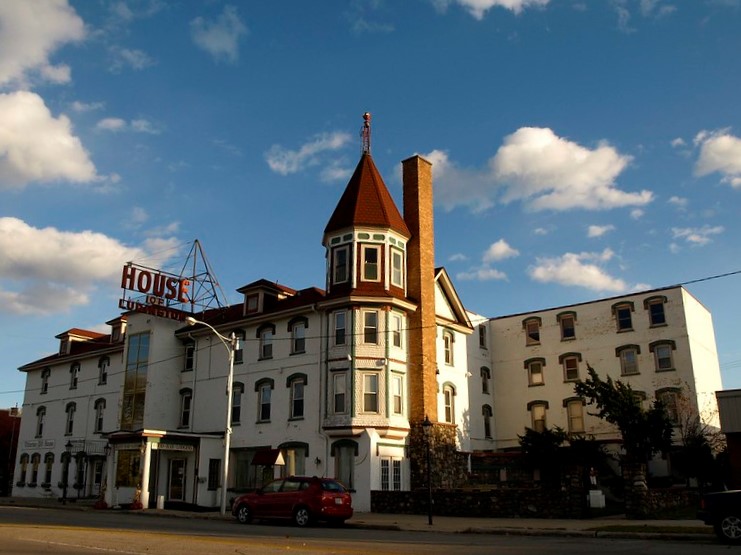 House of Ludington
House of LudingtonFlickr/PunkToadAttribute
The House of Ludington is an imposing historic structure that still serves as an active hotel with a dining room and cozy bar.
For some Yoopers, a trip to Escanaba and an overnight stay at the House of Ludington was an unusual luxury never to be forgetten.
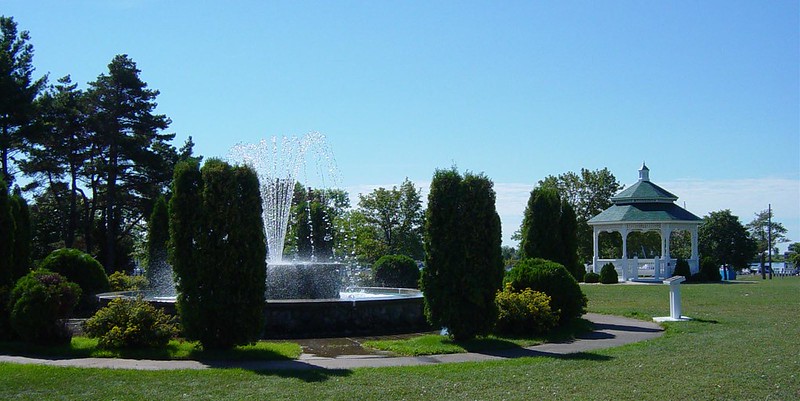 Gazebo and Fountain in Escanaba Park
Gazebo and Fountain in Escanaba ParkFlickr/PaulTOlson
Escanaba has many pleasant parks,including some along the waterfront.
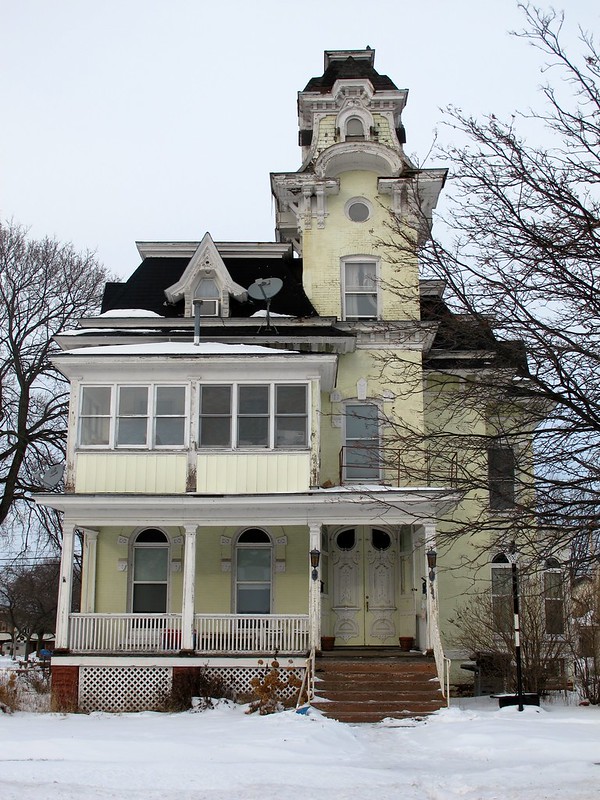 Escanaba Italianate Home
Escanaba Italianate HomeFlickr/Chad Johnson
Escanaba has also done a great job at encouraging the preservation and active use of many historic buildings and homes.
One of the biggest events in the Upper Peninsula is the annual Upper Peninsula State Fair. It is held at the Escanaba fairgrounds on 12th Avenue North in the middle of August.
The opening day of the first fair was September 17, 1928. In 2017, the fair set an attendance record of 87,750. The Covid-19 pandemic caused the fair to be canceled in 2020.
The only other missed years were during World War II between 1942 and 1945.
One of my fondest memories is of my dad taking me to a stock car race at the fair in 1950. He had a fascination with Southern names, and one of the drivers was Herschel Buchanan from Louisiana.
Our family car was a Nash, and we were thrilled that Herschel was racing a Nash. Nashes and Hudsons ruled the stock car races in those days.
As I recall, Herschel finished second behind another Nash, a coupe.
Learn more about the UPPER PENINSULA STATE FAIR.
ESCANABA IN DA MOONLIGHT

Escanaba in da Moonlight is a play written by Jeff Daniels in 2001 that was made into a film of the same name.
The film is a humorous look at the hunting culture of the Upper Pensinsula, and the play is continually being performed in community theaters around the country. I first saw the play in Naples, Florida.
ESCANABA FOOD, LODGING, AND THINGS TO DO
INTERACTIVE GOOGLE MAP ESCANABA, MICHIGAN
20200830
By Mike Miller, Copyright 2020-2023 YooperSecrets.com
